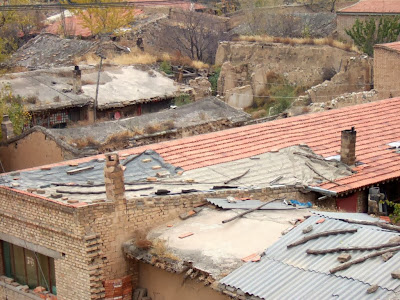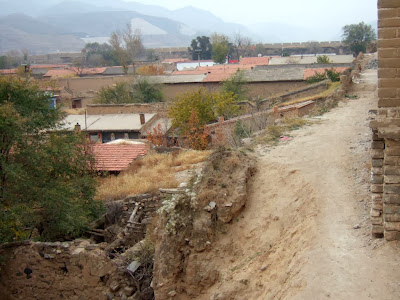
The Fortress of Guangwu (广武城), also known as Shanyin-cheng (山阴城) was an important battling site between Han and Northern nomads in the history, as when nomadic tribes began to move down and attack the southern area, it was always the first target to focus. Being one of the fortress along the Great Wall and the second defensing line of the continent after Datong, Guangwu played a major key role in the entire defensing system of Yanmen-Guan at that time. Since Han Dynasty in 154BC, County of Guangwu had been developed for military purposes. In the past, the forces that stationed here had been effectively prevented and defensed the intrude and attack of Mongolians.



There were two Guangwu-cheng situated at the foot of the Great Wall 5 km apart from each other at the east and west pathway of Aikou (隘口). The old one was first built in Liao Dynasty (916-1125) and the later one was built during Ming Dynasty in year 1374 and restored in 1575.



In order to prevent the attack of Mongolians from the northern side, Great Wall at this area was extensively expanded in early Ming Dynasty (1368-1644) and completed in mid Ming period. Guangwu was one of an essential fortress built along the Great Wall. It was built against the mountain ranges 3 km away from the Pass of Yanmen-Guan.


The stone foundation and brick slabs built arch gate at south was quite well preserved but the inscription at the top plague could not be read any more.


The 10 meter high east wall of Guangwu-cheng had a length of 2km in the past but now remains only two arch gates plus some broken walls.



Guangwu Old Village that located at the foot of Great Wall had been a military strategic point for all warring states to look for and occupy in the past history.



The Ming built Guangwu-cheng is considered as one of the best preserved historical old village in China.



There are about 1400 villagers still living in this ancient site.



It was said that the brick slabs at the East and West wall had been removed by the locals to build their own houses. The remains of the two 8-10 meter long wall were near to collapse but for tourism purposes, it had now been repaired with new bricks.


The Guangwu Great Wall cut through the whole village.


The 10 over meters long pathway from the fortress arch gate had turned into a main street to the villagers.



The broken walls



The newly restored walls


A Museum and a square were built along with the historical Han's Tombs site, 40km away at the north side of Guangwu-cheng.



The Giant statue of Emperor Liu-pang, the founder of Han Dynasty at Han Tombs Square.



The sloping site behind the Giant statue of Emperor Liu-pang were buried with hundreds of Han's generals and soldiers.


This obviously is a touristic project.



Scenery along the way to Daixian - Donkeys, goats are the assets of all villagers.



A little Guanyin temple - The compassion Goddess of Mercy is always at the heart of the villagers.



A farm - plants had been tinted by beautiful falls color.










No comments:
Post a Comment